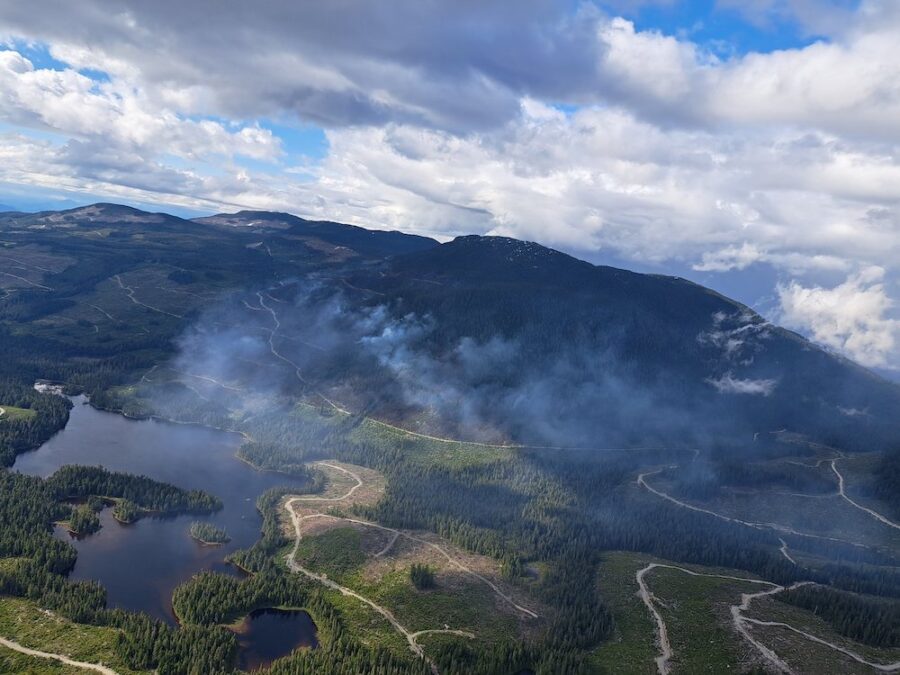
B.C.’s Strathcona Regional District receives funding to mitigate climate-related disasters
July 21, 2023
By Alexandra Mehl, Local Journalism Initiative Reporter
 Located at the edge of the Strathcona Regional District boundary, 5.6 kilometres west of Sayward, the Newcastle Creek fire burned to encompass 230 hectares since it was first spotted May 29. The regional district recently received over $1 million in provincial funding to help mitigate future climate-related disasters. Photo: BC Wildfire Service.
Located at the edge of the Strathcona Regional District boundary, 5.6 kilometres west of Sayward, the Newcastle Creek fire burned to encompass 230 hectares since it was first spotted May 29. The regional district recently received over $1 million in provincial funding to help mitigate future climate-related disasters. Photo: BC Wildfire Service. The B.C. regional district that encompasses Campbell River, the Homalco First Nation, Ka:’yu:’k’t’h’/Che:k’tles7et’h’ First Nations, K’ómoks First Nation, Nuchatlaht First Nation, Gold River, and Sayward received over $1.1 million from the Community Emergency Preparedness Fund (CEPF) to strengthen its resilience against climate-related disasters.
Through the CEPF, the province is providing over $44 million in funding to be allocated among 70 projects in 63 communities throughout British Columbia under the Disaster Risk Reduction-Climate Adaptation program, reads a provincial press release.
According to a staff report provided by the Strathcona Regional District, among the number of projects to be funded are the Houpsitas Watershed Restoration Project and the Nootka Island Ecological Restoration Strategy. Both projects will include a watershed risk assessment and a stream restoration design with aims to support “long-term solutions that reduce the impact of disasters” and develop engagement with the respective First Nation, reads the document.
For Ka:’yu:’k’t’h’/Che:k’tles7et’h’ First Nation, located in the Strathcona region, emergency preparedness is important due to how remote they are, said emergency preparedness co-ordinator Elizabeth Jack.
“We’re three and a half to four hours from the closest city, which is Campbell River,” said Jack. “We don’t have the luxury of having a hospital or walk-in clinic or doctor here 24/7.”
When asked about the importance of funding for emergency preparedness, Jack shared that through partnerships with SRD and the Holistic Emergency Preparedness and Response the First Nation has been able to achieve grants for projects that have helped the its emergency program, such as Tsunami sirens, an evacuation plan as well as emergency sea cans and supplies (blankets, pillows, and dried food etc.).
According to the Union of BC Municipalities, which administers the Disaster Risk Reduction-Climate Adaptation funding stream, the program is to reduce risks of future disasters from natural hazards.
Intake for the 2023/2024 Disaster Risk Reduction-Climate Adaptation program is open until Oct. 6, 2023.
Alexandra Mehl is a Local Journalism Initiative Reporter for Ha-Shilth-Sa.
Print this page